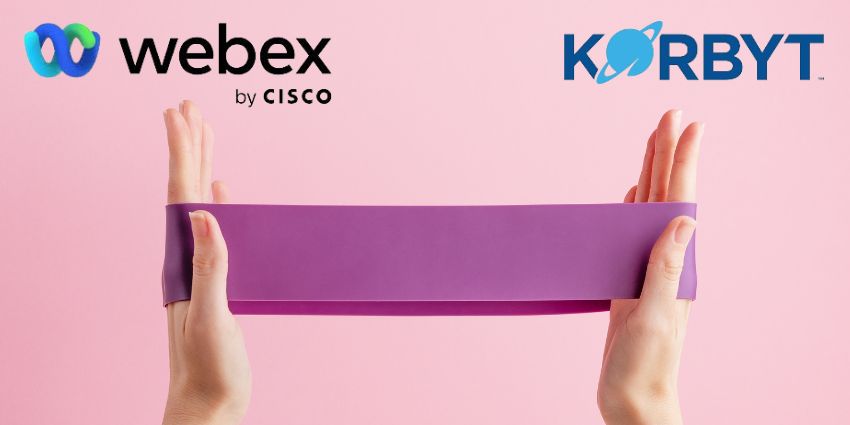Disruption in the contact centre space caused by the emergence of modern cloud-based CCaaS solutions and the ongoing migration momentum from PBX to UC is creating new market opportunities for UC users to deliver a modern customer experience.
Providers also have the opportunity to offer a modern service experience across an enterprise, not just from the organisation’s central service desk, and inject CX capabilities into the company’s EX (employee experience).
With our latest Round Table topic, “UCaaS and CCaaS”, we spoke with executives from Vonage, Zoom, Avaya, GoTo, AudioCodes and CallTower and asked about the newest tech trends shaping the industry, the opportunities they afford and how they can improve CX and streamline communication, plus what the challenges are when implementing them.
What are some of the latest trends in combining UC and CC tech, and how are they shaping the industry?
Sanjay Srinivasan, SVP Sales Engineering, Vonage

As the world embraces a hybrid and work-from-anywhere model, companies have had to evaluate their readiness to adapt, according to Sanjay Srinivasan at Vonage.
“In parallel,” he adds, “the rapid shift to a digital-first economy is adding additional pressure on brands to evolve how effectively they connect with consumers.
“Many have recognised their existing communications technologies are not equipped to support the demands of employees, agents, and consumers.
“Businesses that are still leveraging UC and CC solutions from different vendors realise that having solutions that don’t talk to each other are preventing them from reaping the full benefits from either.”
Srinivasan believes that a well-integrated UC and CC solution is becoming table stakes for sustaining and building a successful brand with a customer-first approach. The customer experience (CX) is a critical differentiator for any business in today’s hyper-connected marketplace.
He elaborates: “As brands seek to adapt, they see opportunities to consolidate and simplify their business and to reduce costs in their everyday operations while improving overall engagement for consumers and employees alike. While they could still be using multiple tools to communicate and collaborate, they understand the need for a fundamental shift in leveraging their communications technology across their calling, meetings, and contact centre needs.”
Srinivasan explains that to stay successful; brands must focus on experience-led customer interactions and journeys, which can only be enabled by access to well-synchronized internal collaboration and communication systems.
He concludes: “Those that have adopted unified UCaaS and CCaaS solutions — especially in healthcare, Financial Services, Banking, and Insurance — have achieved greater workforce flexibility, elevated productivity, and improved customer experiences.
“And we see the demand for these combined solutions continuing to accelerate.”
Neal McMahon, Regional Sales Leader, Avaya

Avaya’s Neil McMahon feels that the influence of EX on CX and business results has always been strong.
He comments: “Engaged employees go the extra mile to create better CX. What’s new is that customers are everywhere on every device and want to make contact via any channel. This means there must also be ‘about employees’ equipped with the tools to support these customers best for them and wherever they work.
“It’s therefore essential to have tight collaboration between “front office” staff and Subject Matter Expert colleagues who may be in the “back office”.”
“It’s about simplification, so the lines are blurring between the features associated with the contact centre, such as AI, and those associated with UC and work collaboration, for example, messaging and transcription.”
Gidi Adlersberg, Voca CIC BL Manager, AudioCodes
“Before UC migration, the Contact Center was always somewhat of a separate island, living completely detached from the rest of the organisation. So were its users — or ‘the classic agents’,” remarks Gidi Adlersberg of AudioCodes.
He points out that they were separate, and only those classic agents residing at the main service desk could provide high-level service. “Other users in the organisation were simply unable to deliver the same high service standards,” he adds.
“Today, he continues, “With the growing shift to modern UC platforms, empowering EX with CX technology is a primary trend we’re observing in the industry.
“The idea here is beautifully simple, yet powerful: when you consolidate UC and CC, every UC user becomes a potential agent.”
Adlersberg concludes, “Got a CCaaS solution that effectively leverages your Teams Phone infrastructure? Congratulations, your entire organisation is now able to provide modern CX.
William Rubio, Chief Revenue Officer, CallTower

“The combination of UC and CC, something we like to call “the digital workplace”, is exploding right now, says William Rubio of CallTower.
Referring to his firm, he shares that CallTower offers solutions like Webex and Zoom, which both have in-house contact centre solutions that streamline implementation and collaboration.
Rubio adds: “We also have found a harmony between Operator Connect for Microsoft Teams and MS Teams Direct Routing and the Blended Cloud Contact Center solution from our friends at Five9: we love to see our Teams customer take advantage of that combination as well.”
Praising the work of the cloud contact centre software firm, he remarks: “Five9 has been a Gartner Magic Quadrant leader for five years in a row for a reason: their contact centre delivers anything a growing organisation could need, anywhere in the world.”
Kentis Gopalla, Head of Phone and Contact Center Product Ecosystem, Zoom
Zoom executive Kentis Gopalla offers his insights: “The first trend we see is that customer experience is no longer limited to the contact centre alone.
“As customer experience transformation becomes a strategic initiative of businesses, employees are becoming CX advocates by supporting contact centre agents. The line blurs between the contact centre and the rest of the organisation.”
Gopalla points out that the tools in the unified communication portfolio are available to contact centre employees for greater employee engagement. Also, contact centre agents can communicate and collaborate with other agents, supervisors, or even back-office employees.
He adds: “The contact centre agents are now empowered to drive first-contact resolution by having access to experts at any time.”
Gopalla continues: “AI-powered chatbots enable enterprises to address simple and basic queries through automation. When a live agent must address a query, it requires deeper engagement, and video can be a good communication tool to provide that deeper engagement.”
He sees video as the next level and says: “This is where capabilities that were traditionally part of a UC solution are now making their way for agents and customers to collaborate to resolve issues. Whilst initial contact can be through digital channels or voice, you can now provide an option to “upgrade” to a video conversation and provide additional capabilities such as screen sharing.”
Joseph Walsh, Senior Director, Global Marketing at GoTo

GoTo senior director Joseph Walsh believes there are three primary trends: consolidation, consumers embracing more digital technologies when engaging with customers, and vendors offering both UC and CC together.
He explains: “There is a general trend towards consolidation and reducing complexity, which leads people looking to buy their UC and CC tech together.
“Businesses want to buy more from fewer vendors with more seats for less money.”
Walsh continues: “We are also seeing a shift in consumer behaviour with digital channels for procurement and customer service, while businesses are exploring better tools to communicate with customers through both contact centres and digital engagement.”
He explains why UC and CC offerings are blending and say: “With people wanting to buy more for less, businesses are now putting their UC and CC offerings together to hit the mark for customers looking to improve both. With UCaaS and CCaaS solutions together, you can seamlessly tap into other knowledge experts within the business during your customer engagement experience and have customer contact information handy. ”
Walsh concludes: “Bundling them together also reduces costs. With the same SLA, procurement and onboarding are simple, and integrations that work for UCaaS also work for CCaaS solutions. It keeps costs down while easing management, deployment, and use.”
What opportunities do these technologies provide for businesses, and how can they be leveraged to improve CX and streamline communication?
Joseph Walsh, Senior Director, Global Marketing at GoTo
Walsh believes that bundling UC and CC together benefits resources, budgets, and overall customer service and satisfaction, plus it can help provide a better customer service experience while increasing the value of the products.
He explains: “When UC and CC are together on one platform, you increase the chances of first-time resolution during customer communication. You can easily instant message other reps and get answers more quickly.
“By making everyone within your organisation more accessible, you ensure a faster turnaround time and streamlined communication, which leads to more revenue on the sales side. ”
He adds: “You also increase consistency of information with visibility of the entire customer journey, resulting in a more efficient experience.”
Walsh knows that despite these benefits, smaller businesses are often less likely to want to consolidate and more likely to buy ad hoc solutions when and if they need them. He suggests: “This offers a great opportunity to these SMBs, as bundles make more advanced tech more widely accessible to small businesses.”
Walsh points to a use case: “A success story that speaks to this well is with Go Insurance.”
He continues: “The GoTo customer deployed GoTo Connect, transforming their business, encapsulating the benefits of bundling and workflow integrations. Go Insurance selected GoTo Connect for their phone system and contact centre solution. This allowed the company to operate remotely, except for the challenge of obtaining signatures on physical paperwork.”
Walsh concludes: “With GoTo Connect, they integrated with a technology called blueButler that allowed them to capture auto voice signatures, thus creating huge efficiencies in the workflow. Not only did it allow them to work remotely, but it also made business and payments and operations quicker.”
Gidi Adlersberg, Voca CIC BL Manager, AudioCodes

Adlersberg comments: “Aside from classic agents residing in the main service desk, every organisation has other lines of business which provide service all day long — those ‘UC/CC hybrid’ users that operate in places like the IT Helpdesk, HR, Security, Sales teams, Travel desks and other teams.”
He remarks about missing possible opportunities: “Think about a call arriving to sales after-hours — do you want to miss that call? Think about a VIP HR candidate calling you on a Saturday morning – how about routing that call to a recruiter’s mobile? What about your Security team or your travel desk’s 24/7 availability needs?”
Adlersberg confirms: “In all these examples, we have users that can boost their CX/EX game with basic Contact Center capabilities like IVR, Call Queues, Voicemail and Reporting.
“When you have a CCaaS that rides your UC — those capabilities are under the fingertips of every user in your company — and that is the real power of UC and CC consolidation.”
Sanjay Srinivasan, SVP Sales Engineering, Vonage
“The consolidation of communications channels continues to impact all industries across the globe,” says Srinivasan. “This trend is many years in the making.”
He continues: “Over the last several years, customers of all sizes have reaped the benefits of the convergence of our unified communications and contact centre solutions. Businesses increasingly want — and need —a unified communications solution seamlessly integrated with contact centre capabilities, including access to CRM and business apps, all within a single dashboard.
Srinivasan adds a solution suite that should also provide fully programmable applications and reduced complexities and cost, enabling them to transform how they communicate and operate from the office or anywhere.
He explains:
“A truly integrated suite of solutions to help businesses create differentiated experiences for their customers and drive increased productivity within their organisations is not a need for the future but a genuine need right here and now.”
Srinivasan details how the next level fusion is customer-focused: “For example, with unified UC and CC solutions, contact centre agents are empowered to reach subject matter experts within an organisation to help solve a customer’s problem faster than before.
“Similarly, at the heart of any organisation wanting to take a customer-centric approach is making each department within the organisation become part of the customer service value chain. An integrated UC and CC solution enables departments outside the contact centre, such as marketing, finance, sales, and tech support, to better connect and interact internally or externally.”
Neal McMahon, Regional Sales Leader, Avaya
McMahon proffers a massive opportunity for businesses to differentiate themselves in their market by delivering more excellent value through CX.
“Access to advanced levels of assistance and contextual information, so agents already know pertinent information as soon as an engagement starts, help to personalise the customer experience, which is really about recognition and making customers feel ‘seen’ and valued.”
He explains that as there is no one-size-fits-all model for how experiences are consumed, businesses need a comprehensive experience platform that treats all employee-to-employee or employee-to-customer conversations as one set of channels, one set of features and one set of users.
He continues: “So, a conversation might start in the contact centre, move to where the subject matter expert is, and then elsewhere before reverting to the agent. This is not passing the customer around because, with an experience platform, everyone can focus on the customer’s experience because they are using the same UC and CC features.”
Kentis Gopalla, Head of Phone and Contact Center Product Ecosystem, Zoom

Gopalla believes meeting customers through their preferred channels improves customer satisfaction and retention. He backs this up by referring to a survey Zoom did recently with Morning Consult, where more than half of customers reported they would leave a brand for a competitor after just one or two negative support experiences.”
Using the results, he adds: “Conversely, a positive experience makes them more likely to leave a good review — 60 percent reported they would leave a positive online review after a good support experience.”
“Now more than ever, tools that improve customer retention are key for business.”
The Zoom executive continues: “Products need to prep agents with relevant context between handoffs and streamline communication to save time. Customers hate waiting — 85 percent think short wait times should be part of the support experience.
Gopalla concludes: “Businesses can look at blurring the line between the contact centre and the back office by providing the tools to the contact centre agents to collaborate with back-office experts and deliver a better customer experience.”
William Rubio, Chief Revenue Officer, CallTower
According to Rubio, the digital workplace erases the line between communication systems, and when lines get erased, productivity improves.
He remarks: “How often are you working on a project, and some constant repetition burns you out? Or when your opening, closing and switching of apps all day gets so tiring that you need a break? Or, most importantly, how many inbound contact centre callers get frustrated with the runaround, and their problems don’t get solved with ease?
“Combining UC and CC addresses all these issues — productivity, IT workload, and customer experience will improve and, therefore, your bottom line. Combining UC and CC also simplifies IT issues arising from two disparate systems being forced to interact, creating an easier billing process.”
What are some of the key challenges they may face during the implementation process?
William Rubio, Chief Revenue Officer, CallTower
Regarding deployment, Rubio comments: “A key challenge we have seen is too much technology change at once.
“We have found that companies that migrate in stages are very successful in adoption and utilising their new solutions faster, especially when coming off of on-premise solution.”
He adds: “CallTower also mitigates issues around implementation with a complete project plan and dedicated project management. This ensures for all parties that expectations are set and agreed upon.”
Kentis Gopalla, Head of Phone and Contact Center Product Ecosystem, Zoom
Gopalla knows it could be more straightforward and says: “Introducing new tools or onboarding employees to new workflows can be challenging. People often prefer old, familiar working methods to new ones — despite the long-term benefits and efficiencies the new tool offers. ” He offers a solution.
“Choosing unified communication tools that are easy to use and offer a familiar interface can make the transition easier.”
Joseph Walsh, Senior Director, Global Marketing at GoTo
According to Walsh, customers and the customer experience should always be at the forefront of a business’ mind when making technology decisions. He remarks: “Streamlining UC and CC shouldn’t cause any disruption to the customer experience.”
He points to what enterprises should be focused on and says:
“Businesses should prioritise the contact centre components over the UCaaS components when selecting a vendor for bundling. Most unified communications solutions are becoming simpler. So, the contact centre is where you have the most nuances. ”
He concludes: “The implication process should also be considered. How easy or hard is it to integrate? Be mindful of how it all works together. Make sure you’ve done your planning to think this through at the outset. ”
Gidi Adlersberg, Voca CIC BL Manager, AudioCodes
“Challenges, of course, depend on which UC and CCaaS you’re going for,” comments Adlersberg.
“Typically, hurdles come when organisations may try to combine elements that were designed in different eras, and with different connectivity methods as a result.”
He adds: “Connecting a modern UC platform like Microsoft Teams, for example, to a CCaaS solution that can only connect with Teams over SIP, for example, the Connect model, may entail various challenges around security, media quality and reporting integrity.”
He concludes: “It is fair to say that adopting modern CCaaS solutions which leverage more advanced Microsoft Teams integration methods — such as the Extend or Power model for a Microsoft Teams Contact Center — will do a great job in making sure you are effectively utilising your UC as your CCaaS vehicle. This will also ensure you minimise security, networking and architecture challenges.”
Neal McMahon, Regional Sales Leader, Avaya
McMahon knows integrating more data sources, digital communication channels, automation/AI, and analytics to enhance and optimise experiences brings complexity.
He counters: “There is a real opportunity for technology partners to help businesses navigate this and provide them with a proven and relevant solution to their business challenges.
“It’s important to offer a range of options from on-premise to hybrid to public cloud and an open platform,” he concludes, “so that a business can achieve its total experience goals without disrupting its existing operations.”
Sanjay Srinivasan, SVP Sales Engineering, Vonage
Srinivasan explains that the combined UCaaS and CCaaS market is growing fast, with the added pressure to provide increased quality of communication services at ultra-fast speeds and low latency.
“With this comes the opportunity to address challenges many businesses face when adopting new technology,” he remarks optimistically.
“Trying to integrate new systems can always have challenges, so it’s critical to find a provider that has deep and broad service and support. You hope you don’t need it, but if you do, you must know it’s ready and rock solid.”
He continues: “With the increased demand for an integrated UC and CC solution, bringing disparate applications together can be difficult.”
He asks: “Can they truly integrate? Can they use the same data? Can valuable user information be passed between them, for example, with presence and availability? Can you manage them from a single pane of glass?
“Choosing a single vendor resolves these concerns, leaving businesses with a single point of contact for service and support and, in the end, a single back to pat.”
“Finally,” Srinivasan concludes, “the key to success is to ensure that what traditionally and legacy was two separate decision-making teams and processes for UC and CC come together within the enterprise, making that transition. Otherwise, the two get independently solved, resulting in a less than optimal solution.”







